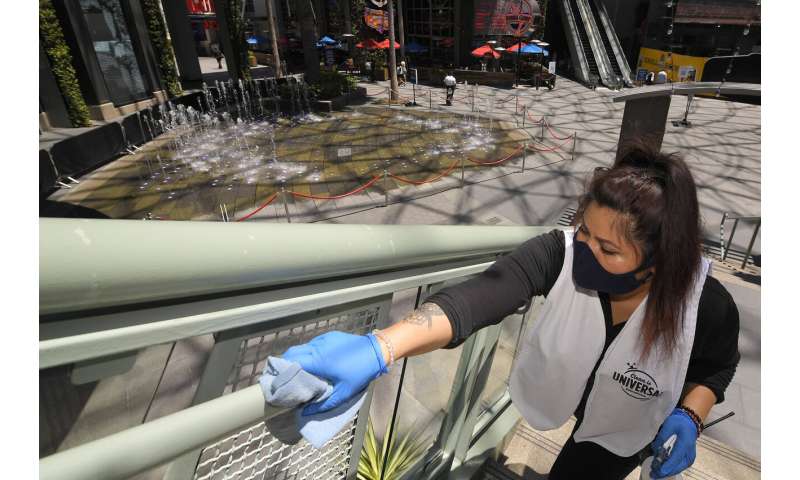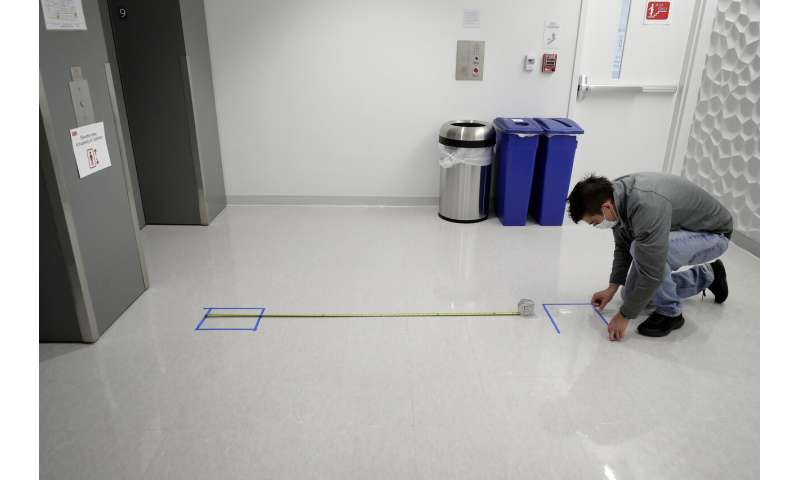CDC posts long-awaited tips for minimizing everyday risk

Take the stairs, not the elevator, down from your hotel room. Encourage people to bring their own food and drinks to your cookout. Use hand sanitizer after banking at an ATM. Call ahead to restaurants and nail salons to make sure staff are wearing face coverings. And no high-fives—or even elbow bumps—at the gym.
These are some of the tips in long-awaited guidance from U.S. health officials about how to reduce risk of coronavirus infection for Americans who are attempting some semblance of normal life.
The Centers for Disease Control and Prevention posted the guidelines Friday, along with a second set for organizing and attending big gatherings such as concerts, sporting events, protests and political rallies.
But the guidelines are “not intended to endorse any particular type of event,” the CDC’s Dr. Jay Butler said in a Friday call with reporters.
The staging and attendance of such events should be in accordance with what local health officials are advising, based on much the coronavirus is spreading in a particular community, he added.
The guidelines are long overdue, some health experts say.
Julia Marcus, an infectious disease researcher at Harvard Medical School, has likened stay-at-home suggestions to “abstinence-only” messaging and cases are rising in nearly half the states, according to an Associated Press analysis.

The CDC has put out many sets of guidelines, including some for churches, camps, schools and transit agencies. But until now, the organization hasn’t offered specific advice to people trying to decide whether to take vacations, get their nails done, host barbecues, visit a bank or library, go out to eat or exercise at a gym.
The CDC’s director, Dr. Robert Redfield, called the new guidelines “common sense suggestions,” not mandates. State or local governments may want to reimpose stricter measures if new outbreaks occur, but that’s a call for them to make, CDC officials said.
The guidelines repeat earlier advice about wearing face coverings, especially if it’s difficult to keep at least 6 feet away from other people.
Source: Read Full Article


